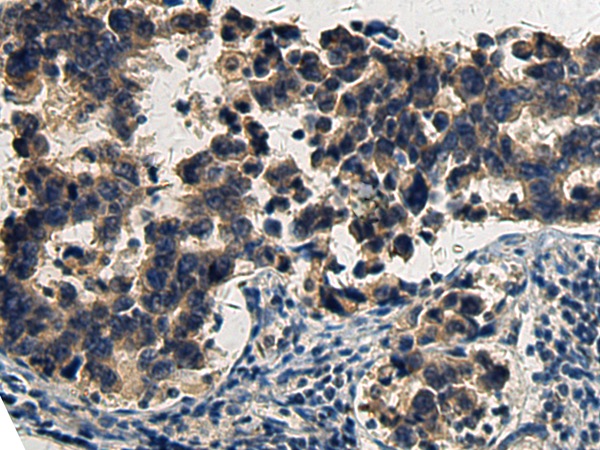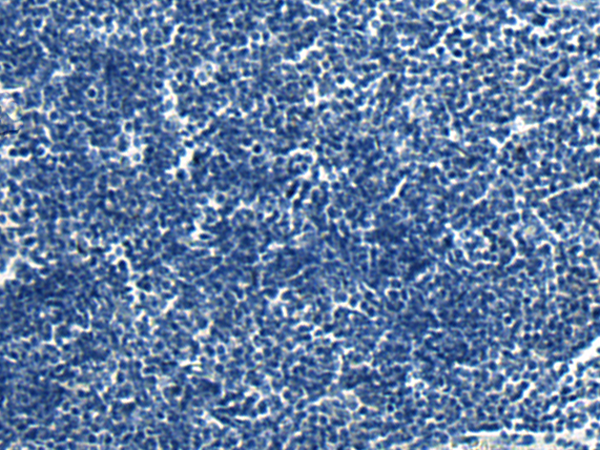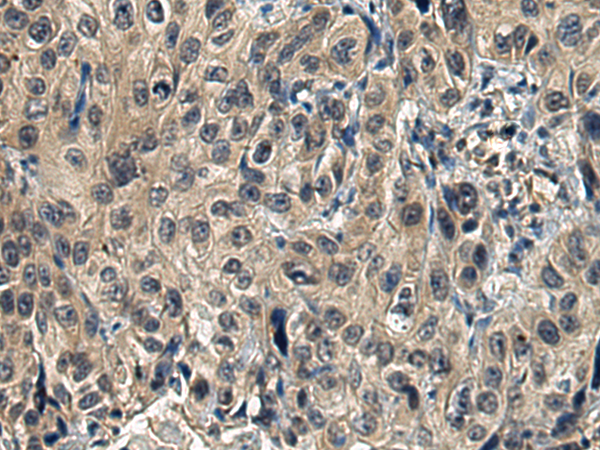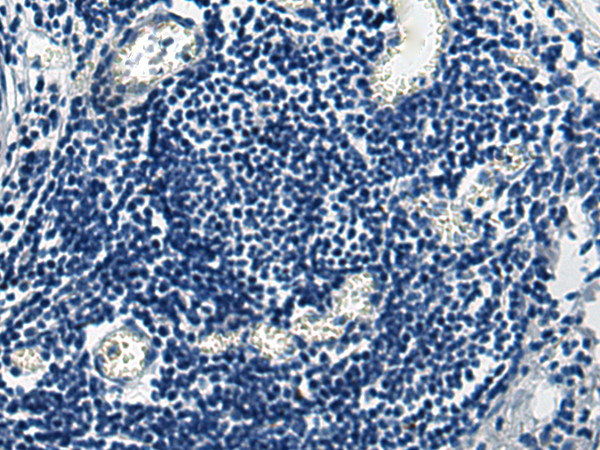| 货号: S220087 |
| 产品全名: BOK(BH3 domain) 兔多抗 |
| 基因符号 BOKL; BCL2L9 |
| UNIPROT ID: Q9UMX3 (Gene Accession – NP_115904 ) |
| 背景: The protein encoded by this gene belongs to the BCL2 family, members of which form homo- or heterodimers, and act as anti- or proapoptotic regulators that are involved in a wide variety of cellular processes. Studies in rat show that this protein has restricted expression in reproductive tissues, interacts strongly with some antiapoptotic BCL2 proteins, not at all with proapoptotic BCL2 proteins, and induces apoptosis in transfected cells. Thus, this protein represents a proapoptotic member of the BCL2 family. |
| 抗原: Synthetic peptide of human BOK |
| 经过测试的应用: ELISA, IHC |
| 推荐稀释比: IHC: 50-200; ELISA: 5000-10000 |
| 种属反应性: Rabbit |
| 克隆性: Rabbit Polyclonal |
| 亚型: Immunogen-specific rabbit IgG |
| 纯化: Antigen affinity purification |
| 种属反应性: Human, Mouse, Rat |
| 成分: PBS (without Mg2+ and Ca2+), pH 7.4, 150 mM NaCl, 0.05% Sodium Azide and 40% glycerol |
| 研究领域: Cell Biology |
| 储存和运输: Store at -20°C. Avoid repeated freezing and thawing |

Immunohistochemistry analysis of paraffin embedded Human colorectal cancer tissue using 220087(BOK(BH3 domain) Antibody) at a dilution of 1/55(Cytoplasm). | 
In comparision with the IHC on the left, the same paraffin-embedded Human colorectal cancer tissue is first treated with the synthetic peptide and then with 220087(Anti-BOK(Anti-BH3 domain) Antibody) at dilution 1/55. | 
The image on the left is immunohistochemistry of paraffin-embedded Human esophagus cancer tissue using 220087(Anti-BOK(Anti-BH3 domain) Antibody) at a dilution of 1/55. | 
In comparision with the IHC on the left, the same paraffin-embedded Human esophagus cancer tissue is first treated with synthetic peptide and then with D260931(Anti-BOK(Anti-BH3 domain) Antibody) at dilution 1/55. |
|







